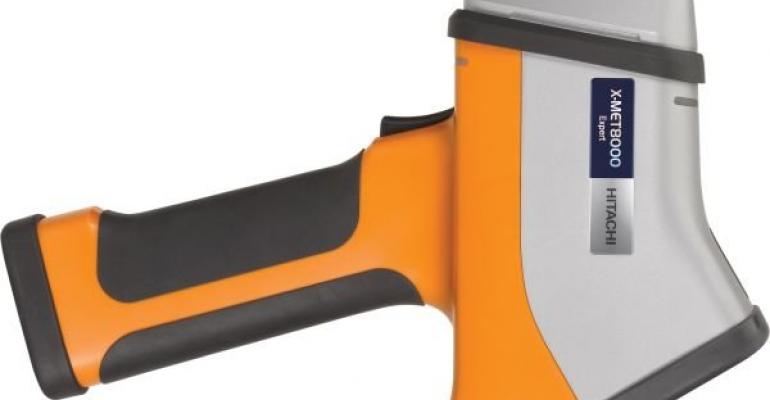Hitachi High Tech’s handheld XRF analysers for the maritime market would enable vessel crews to accurately and efficiently test the sulphur content of their fuel, on the spot.
The handy device can become an operational necessity for crews and authorities alike ahead of IMO’s 0.5% sulphur cap regulation by 2020.
Jonas Östlund, product marketing manager at WSS said: “Partnering with Hitachi High-Tech Analytical Science, one of the leading fuel testing specialist, enables us to provide our customers, what we believe will, become an absolutely essential tool ahead of IMO 2020.
“Crews will be able to eliminate the risk of accidental non-compliance. As vessels approach Emission Control Areas (ECAs), with a lower 0.1%, permissible sulphur content limit, the engine room can immediately and accurately test the sulphur content of the fuel flowing to the engines after changeover and ensure it is compliant,” he said.
Additionally, onboard testing equipment reduces the reliance on the traditional Bunker Delivery Note (BDN), allowing crews to check the sulphur content of fuel during bunkering rather than having to deal with potential fuel specification issues after.
Read more: Fuel sulphur declaration on bunker delivery notes enters into force
“No hassle testing, onboard and on demand, Hitachi High-Tech’s XRF analysers, along with their industry leading expertise and technical support, will make navigating the new fuel sulphur regulations, while not quite plain sailing, far less of a burden,” Östlund said.
WSS will be offering the XRF analyser with an embedded GPS to pinpoint where analysis is performed. Hitachi High-Tech’s cloud service and data-sharing then enable the storage, sharing and managing of data anywhere and anytime.
WSS noted that with no clear guidance for member states from the IMO as yet, recommended test methods for fuel compliance, various options are under consideration by Port State Controls (PSCs), including drone technology to assess smoke plumes and sniffer units in port to detect sulphur emissions.
However, with cost and weather issues affecting such solutions, it is likely mobile equipment such as the handheld device, which PSC officers can use to quickly pass or fail vessels’ fuel, will become the favoured means of testing compliance to the new regulation, WSS added.
Copyright © 2024. All rights reserved. Seatrade, a trading name of Informa Markets (UK) Limited. Add Seatrade Maritime News to your Google News feed.


